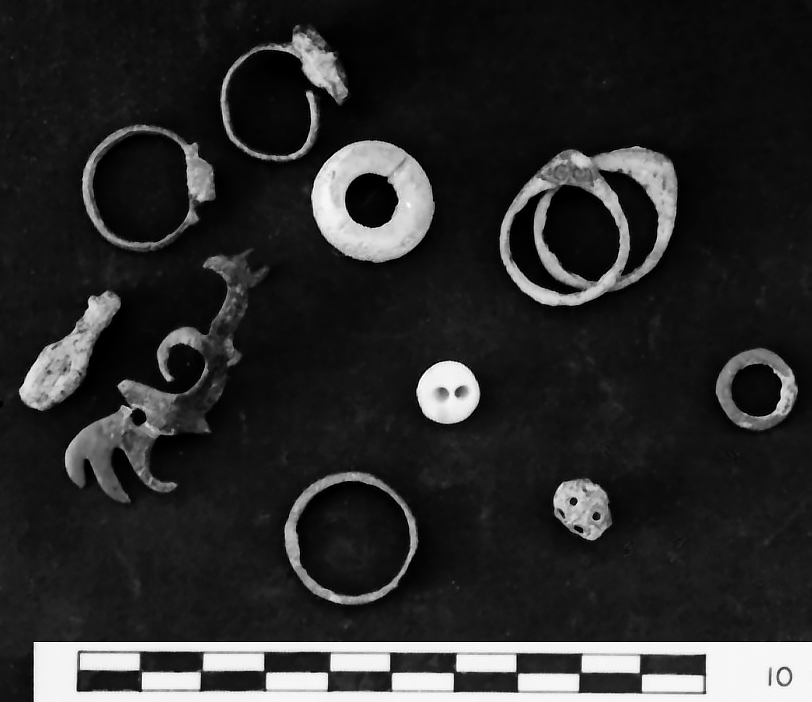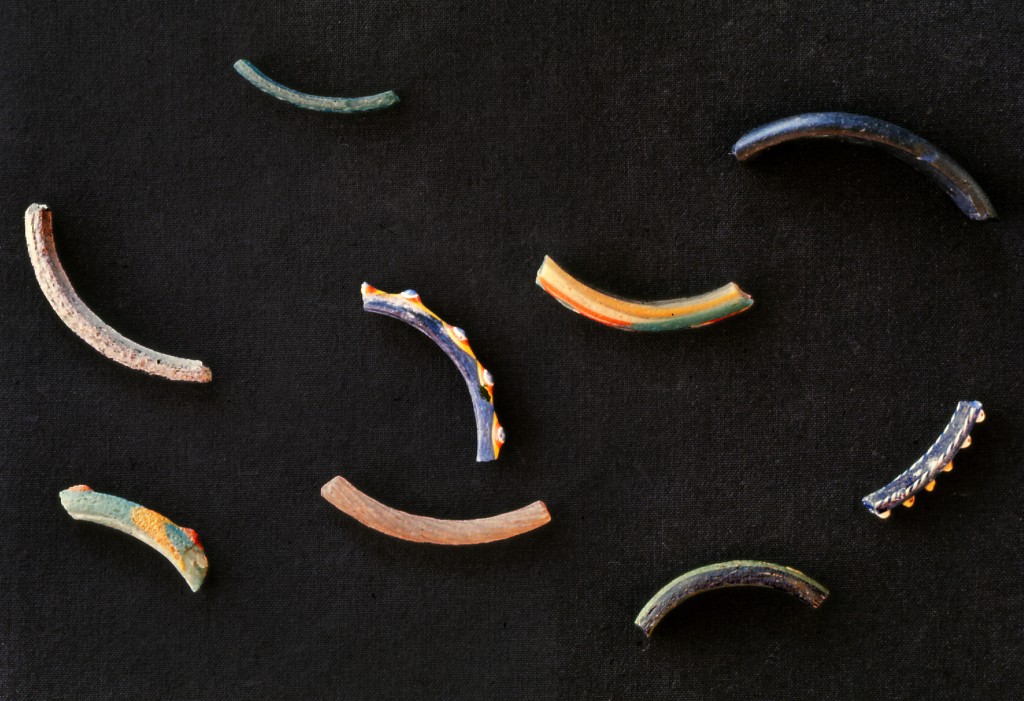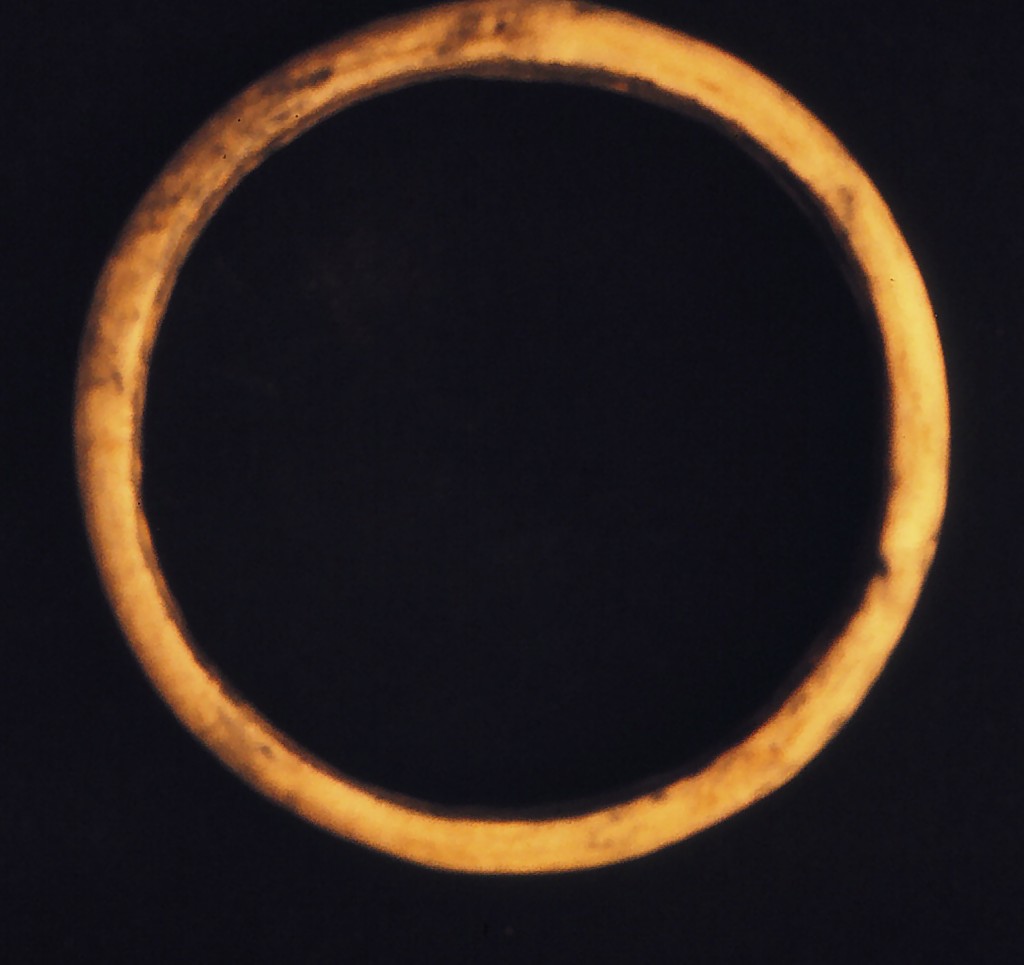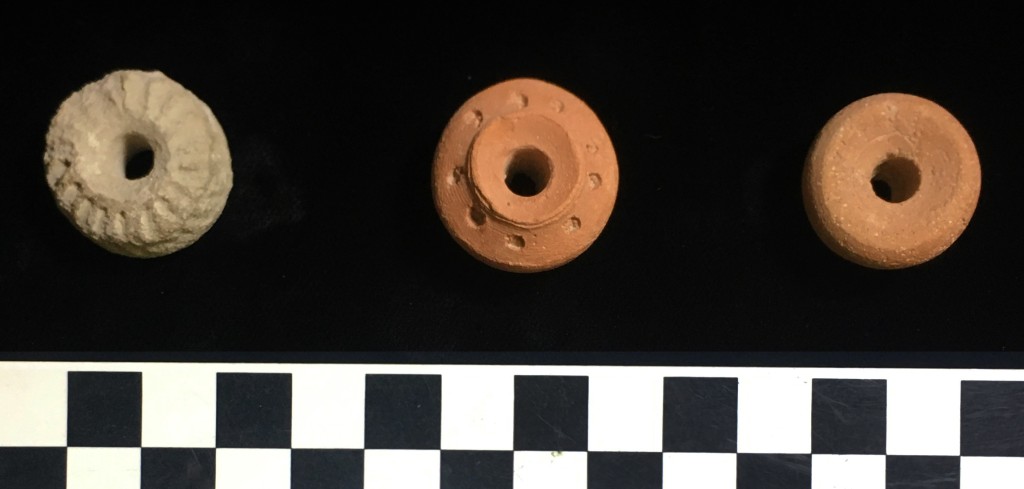Jewelry
Most jewelry pieces found in the Sistan survey were of three kinds: glass bangles, simple bronze finger rings, and individual ceramic beads separated from the rest of the string. Excavations at several sites produced several modest hoards of jewelry that were never recovered by their original owners after being hidden. One hoard from a store room in Area B at Parthian period Sehyak included a gold ring and an unusual imported potsherd. In the excavations of House 183A another hoard included a complete tortoise shell bangle. Several other locations in the Houses 183 excavation produced additional modest pieces of jewelry.







